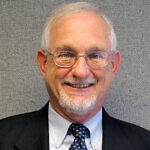Gas turbines have emerged as a strong force in the generation market. Gas and combined cycle power plants dominate current orders from electricity generators. Figure A shows a resurgence of growth in this field during the past decade. This followed the development of gas turbines in the 1940s, their emergence into the peak power market in the 1960s, and the gas turbine slump of the late 1970s and 1980s, during which almost no gas turbines were ordered in the US. This new growth can be explained by the way that R&D advancements interacted with other drivers to gas turbine success. These other drivers were fuel availability, environmental concerns, and changing market conditions stemming from electrical restructuring.
R&D was one of the major keys to gas turbine success. Technical improvements such as material advancements and cooling innovations helped to increase gas and combined cycle turbine efficiency and make them more competitive in the power generation market. Figure B displays a rise of efficiency of gas turbine combined cycle systems.
Natural gas availability was another force that interacted with technical improvements to advance gas turbines. Figure C demonstrates how natural gas prices were high during the same period as the gas turbine slump. Prices peaked during the early 1980s due to natural gas deregulation, a perceived lack of natural gas reserves, and a general trend of rising fuel prices. When additional reserves were discovered and the deregulatory process ended, natural gas prices returned to a more competitive level and could be relied upon as a generally available commodity, driving the gas turbine market.
Other forces interacting with R&D and natural gas availability were environmental concerns and the changing power generation market. Environmental concerns began to show their effect during the 1970s with regulations which drove up the costs of both coal and nuclear power plants. Changing market conditions, hallmarked by electricity restructuring, is changing the way that management decisions are being made about turbine orders. Lower capital costs and higher efficiencies are now driving demand for additional gas and combined cycle turbines.
The success of gas turbine power generation can be explained by the interaction of technical R&D with gas availability, environmental concerns, and changing market conditions. As a result, we can see that R&D alone does not ensure success. We have developed a series of criteria for evaluating energy R&D spending:
- It is important to have a sufficient basic research and technology base upon which to build. The military aerospace industry provided this for gas turbines.
- Until the interaction occurs, R&D can be sustained by niche or alternative markets. For gas turbines this included commercial aviation and the peak power market.
- While it is hard to predict the future, there needs to be at least a plausible scenario of the interaction of forces that will make the technology attractive to a larger market. As the 20th century comes to a close, these forces have converged for gas.
MITEI Author
 Howard Herzog
Senior Research Engineer
Howard Herzog
Senior Research Engineer
MIT Energy Initiative
